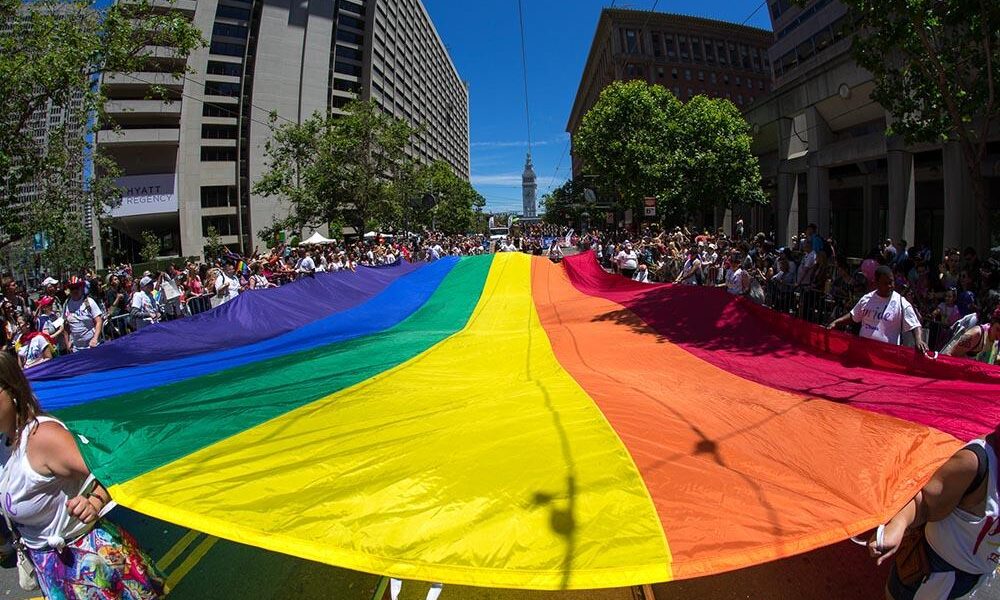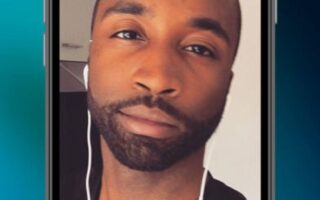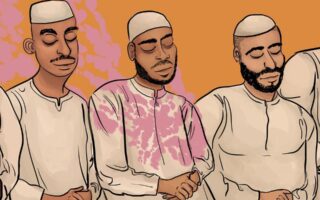As the summer sun casts a vibrant glow over city streets, a tide of color and joy begins to flow through public spaces around the world. Each year, cities transform into canvases of inclusivity and celebration during pride parades, where communities come together to honor the LGBTQ+ experience. At the heart of this celebration lies a crucial detail that brings participants together: the date of the gay parade. While the significance of the event goes far beyond its timing, the date serves as a pivotal marker on the calendars of many, a day when visibility, acceptance, and love take center stage. In this article, we’ll explore the origins of these lively gatherings, their importance in fostering a sense of belonging, and the various ways in which different cities mark their calendars for this impactful celebration. Join us on a journey through the tradition of pride parades, where every date holds the promise of unity and change.
Table of Contents
- Celebrating Diversity: The Importance of Gay Parades in Modern Society
- Understanding the History and Evolution of Gay Pride Events
- Planning Your Perfect Day: Tips for Attending a Gay Parade
- Beyond the Parade: How to Support the LGBTQ+ Community Year-Round
- Q&A
- The Conclusion
Celebrating Diversity: The Importance of Gay Parades in Modern Society
Gay parades serve as vibrant celebrations of individuality and inclusion, creating spaces where people can express their identity freely. These events are not only a showcase of pride but also a vital platform for raising awareness about LGBTQ+ issues. Through colorful parades, individuals and communities come together to emphasize the importance of acceptance and equality, bridging gaps of understanding among diverse groups. Key elements of such celebrations include:
- Visibility: Bringing LGBTQ+ identities into the public eye, fostering representation.
- Solidarity: Creating a powerful sense of unity among participants and allies.
- Advocacy: Highlighting critical social issues, including discrimination and violence against LGBTQ+ individuals.
- Culture: Celebrating the rich history and contributions of the LGBTQ+ community.
In many cities around the globe, these parades have evolved into cultural phenomena, drawing participants from all walks of life, regardless of their sexual orientation. The atmosphere is electric, filled with joy, acceptance, and empowerment. To highlight the significance of gay parades, here is a brief overview of notable events globally:
| City | Date | Notable Feature |
|---|---|---|
| New York | June | Home of the first Pride march in 1970 |
| San Francisco | June | Famous for its colorful floats and activism |
| Berlin | July | Celebrates diversity with a global focus |
| Sydney | February | Highlights LGBTQ+ arts and culture |
Understanding the History and Evolution of Gay Pride Events
The evolution of gay pride events is intricately linked to the fight for LGBTQ+ rights and recognition throughout history. The inaugural pride parades emerged shortly after the Stonewall Riots of 1969, a pivotal moment in the struggle for gay rights in the United States. These celebrations were not just parties; they represented a rebellion against systemic oppression and a call for visibility. Over time, pride events transitioned from radical protests to vibrant celebrations of identity, love, and acceptance, gradually being embraced by broader society as a necessary celebration of LGBTQ+ culture.
As pride events gained traction globally, they began to diversify in form and meaning. Cities around the world now host pride events that reflect local cultures, emphasizing community, solidarity, and activism. Key elements of modern pride celebrations include:
- Parades: Colorful marches that symbolize unity, diversity, and resilience.
- Educational Workshops: Opportunities to inform and engage the public about LGBTQ+ issues.
- Performances and Artistry: Showcases of LGBTQ+ talent, fostering a sense of pride in identity.
To illustrate the widespread impact of pride events, the following table summarizes a few notable annual pride celebrations around the world:
| City | Event Date | Attendees |
|---|---|---|
| New York | Last Sunday in June | Over 2 million |
| San Francisco | Last Weekend in June | Over 1 million |
| Toronto | Last Weekend in June | Over 1 million |
| London | First Weekend in July | Over 1 million |
Planning Your Perfect Day: Tips for Attending a Gay Parade
Attending a gay parade can be an exhilarating experience, filled with vibrant colors, joyful music, and a strong sense of community. To ensure you make the most of this celebration, consider these essential tips:
- Plan Your Outfit: Embrace the spirit of the event by wearing bright colors or fun costumes. Consider comfort, as you’ll likely be walking and dancing a lot!
- Stay Hydrated: Festivals can be overwhelming, especially under the sun. Bring a reusable water bottle to keep yourself hydrated throughout the day.
- Know the Schedule: Familiarize yourself with the parade route and timing. Check online for any special performances or featured speakers to ensure you don’t miss out.
- Buddy System: It’s always safer and more fun to go with friends. Establish a meeting point in case you get separated during the festivities.
Don’t forget to capture the moments! Bring a camera or smartphone to snap photos during the parade, but remember to respect people’s personal space and ask for permission before taking pictures of others. If you’re feeling adventurous, consider bringing along fun props like flags or glitter to enhance your photos. Be sure to also check out local vendors and artists, as many parades feature unique merchandise and delicious snacks. Consider drafting a small checklist of what to bring:
| Item | Description |
|---|---|
| Water Bottle | Stay hydrated throughout the day. |
| Phone/CAMERA | Capture memorable moments. |
| Comfortable Shoes | Prepare for walking and dancing! |
| Snack | Grab some energy-boosting treats. |
Beyond the Parade: How to Support the LGBTQ+ Community Year-Round
Supporting the LGBTQ+ community extends far beyond the vibrant celebrations marked by parades and pride events. To truly make an impact, consider integrating advocacy into your everyday life. Here are some tangible ways to lend your support:
- Educate Yourself: Take the initiative to read books, watch films, and engage with content created by LGBTQ+ individuals to better understand their stories and challenges.
- Frequency Local LGBTQ+ Events: Participate in workshops, cultural events, or forums hosted by local organizations that promote LGBTQ+ rights and awareness.
- Champion Inclusivity: Advocate for inclusive policies at your workplace or community, ensuring that LGBTQ+ voices are heard and respected.
Another significant way to show solidarity is through financial support. Consider contributing to the organizations that play a vital role in the advancement of LGBTQ+ rights. View the table below for some options that could make a difference:
| Organization | Focus Area | Website |
|---|---|---|
| Human Rights Campaign | Advocacy & Education | hrc.org |
| GLAAD | Media Representation | glaad.org |
| Trevor Project | Suicide Prevention | thetrevorproject.org |
Q&A
Q&A: Understanding the Significance of Gay Parades and Their Dates
Q1: What is a gay parade?
A1: Gay parades, also known as pride parades, are vibrant celebrations that promote LGBTQ+ visibility, rights, and acceptance. They typically feature colorful floats, performances, and an array of participants and supporters rallying together to advocate for equality and celebrate diversity.
Q2: When are gay parades typically held?
A2: Gay parades are often organized in June, coinciding with Pride Month, which commemorates the Stonewall Riots that occurred in June 1969. However, many cities host their parades at different times of the year. The exact date can vary based on local traditions, weather, and scheduling.
Q3: Why is Pride Month celebrated in June?
A3: June was designated as Pride Month to honor the anniversary of the Stonewall Riots, a pivotal event in the LGBTQ+ rights movement. This rebellion against police raids at the Stonewall Inn in New York City galvanized activists and marked the beginning of a more organized fight for LGBTQ+ rights.
Q4: How do cities decide on the date of their gay parade?
A4: Cities typically consider factors such as local weather, logistics, and existing community events when choosing their parade date. Organizers may also collaborate with local LGBTQ+ organizations to ensure that the date is inclusive and maximizes participation.
Q5: What goes into organizing a gay parade?
A5: Organizing a gay parade involves meticulous planning, including securing permits, coordinating with law enforcement for safety, lining up sponsors, and promoting the event. Volunteers often play a crucial role in logistics, ensuring everything runs smoothly on the day of the parade.
Q6: What can attendees expect at a gay parade?
A6: Attendees can look forward to a festive atmosphere filled with music, dancing, and lively performances. Parades often showcase diverse groups representing various identities within the LGBTQ+ community, and you’ll find colorful costumes, banners, and signs promoting messages of love and equality.
Q7: Is participation limited to those within the LGBTQ+ community?
A7: Not at all! Gay parades are inclusive events that welcome allies, friends, and supporters from all walks of life. The essence of the celebration lies in unity and community, making it a great opportunity for everyone to stand together in solidarity.
Q8: What is the broader impact of gay parades on society?
A8: Gay parades serve as a powerful platform for raising awareness about LGBTQ+ issues, fostering dialogue, and challenging stereotypes. They can inspire social change and encourage greater acceptance within communities, helping to break down barriers and promote inclusivity.
Q9: How can someone get involved in their local gay parade?
A9: Getting involved can be as simple as attending, but there are many ways to participate! You can volunteer with local organizations, sponsor a float, or even march with a group representing a cause dear to your heart. Check local pride websites or social media pages for opportunities to contribute.
Q10: Are gay parades family-friendly events?
A10: Generally, yes! Many gay parades are family-friendly, offering events and activities for people of all ages. While the atmosphere is often lively and celebratory, there are typically spaces and events designed to accommodate families, ensuring everyone can enjoy the experience.
The Conclusion
As the vibrant colors of the gay parade paint city streets and the rhythms of unity echo in the air, it’s clear that this celebration is more than just a date on the calendar. It’s a powerful reminder of love, acceptance, and the ongoing journey toward equality. Whether you’re a participant, a spectator, or simply an ally, the spirit of the event invites everyone to reflect on the importance of community and the strides made through resilience and celebration. As the festivities come to a close, let us carry the energy and lessons of this day into our daily lives, fostering inclusivity and understanding, not just in pride month, but throughout every day of the year. Until next time, let love lead the way.



